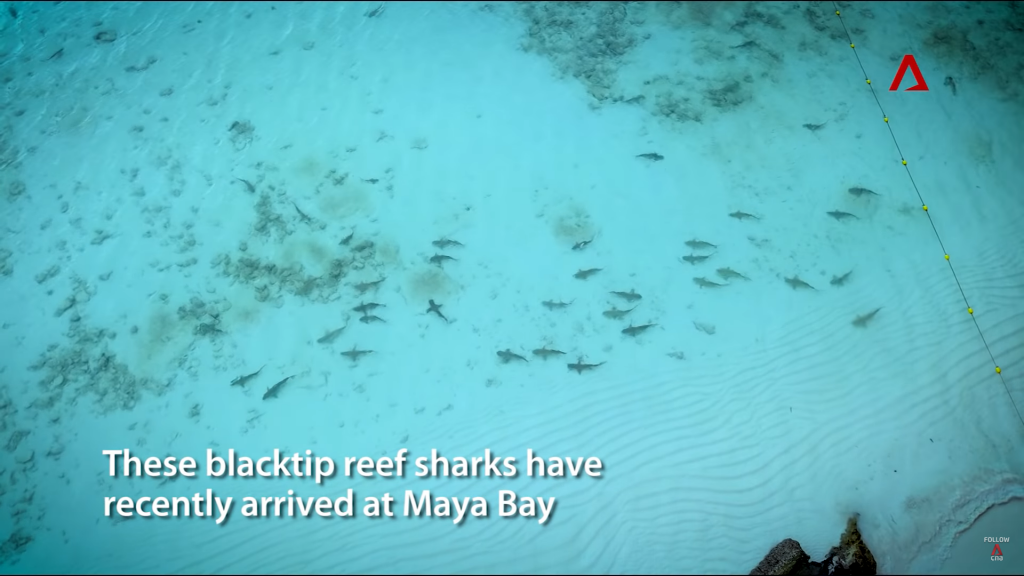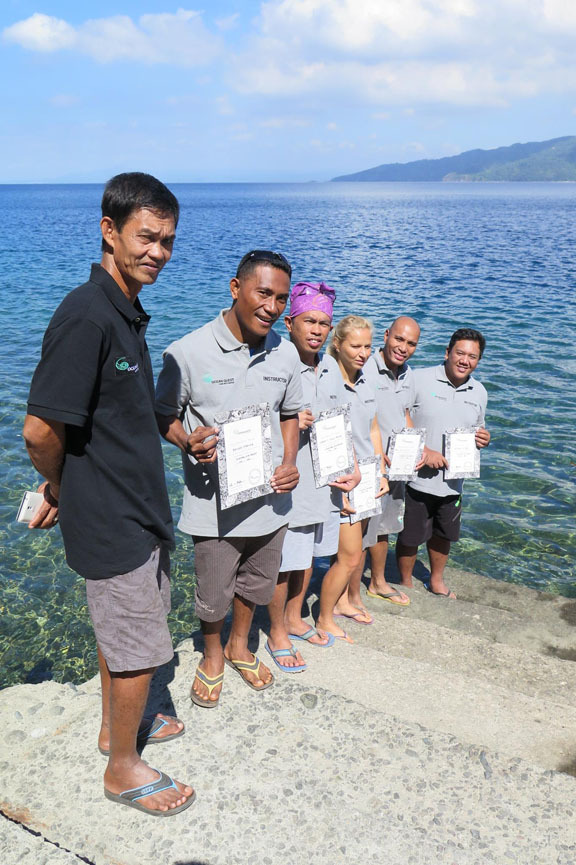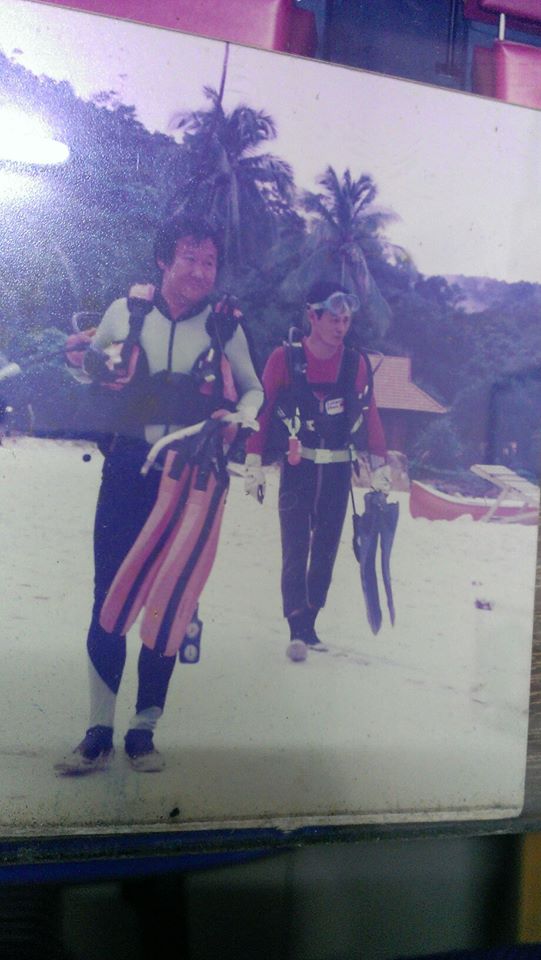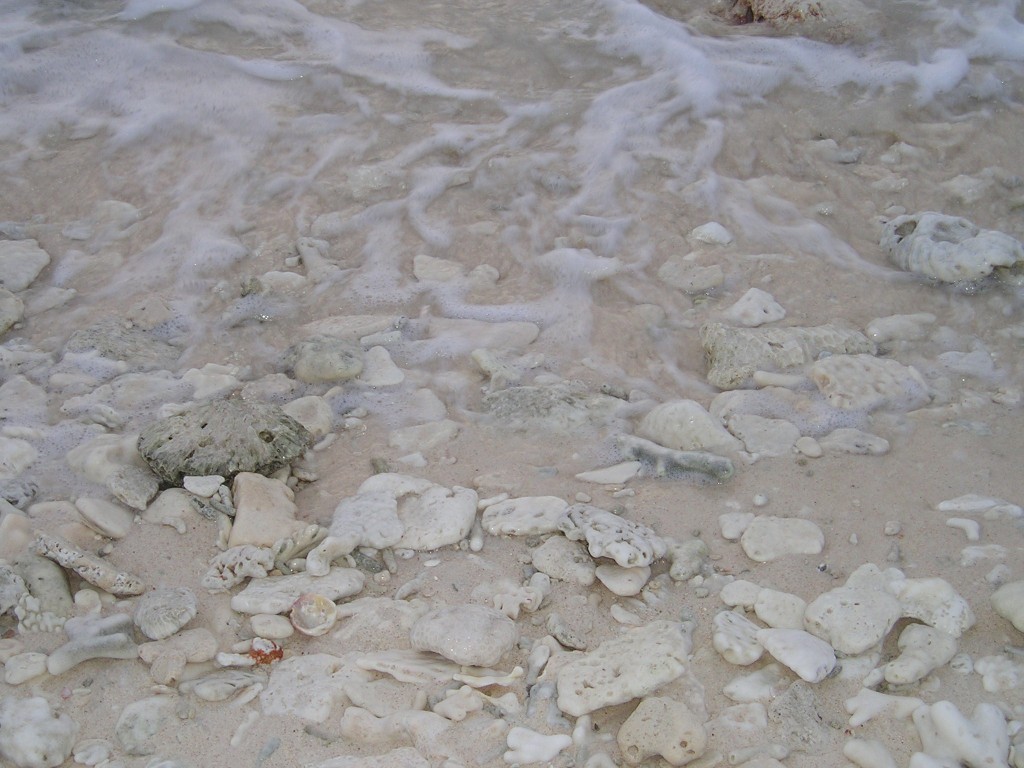Meet Anuar – the Terengganu man who built a world-famous empire of… coral glue?
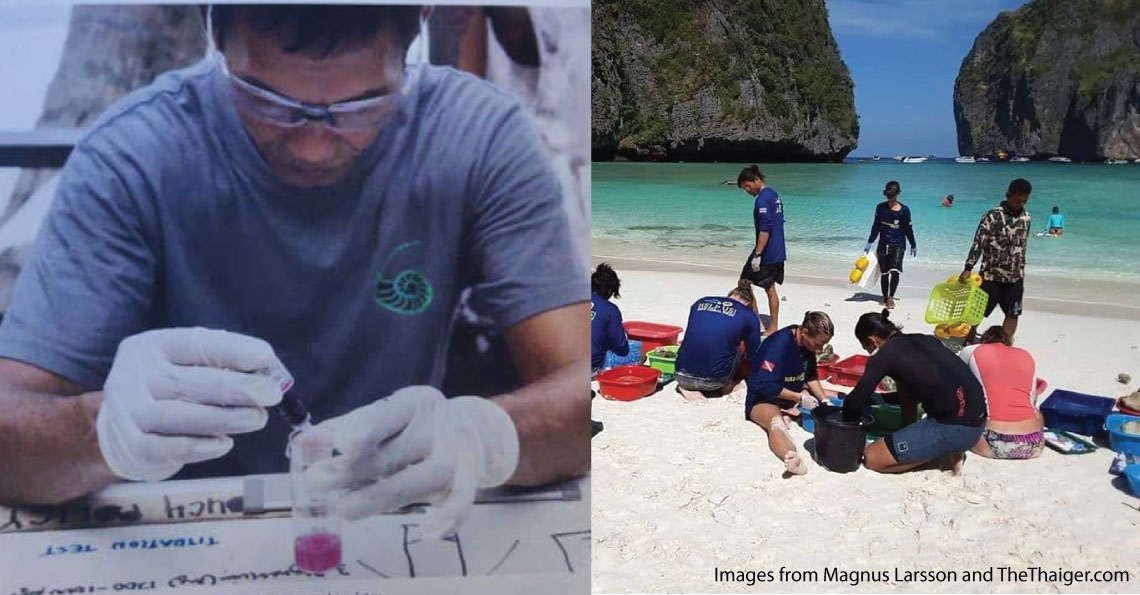
- 7.8KShares
- Facebook7.6K
- Twitter20
- LinkedIn12
- Email16
- WhatsApp124
This writer prides himself in kinda knowing what’s going on around Malaysia. Having been with CILISOS for 6 years now, being a keen scuba diver, and participating actively in coral conservation, I should have heard of Anuar Abdullah.
When someone from another conservation program called TRACC told us that there’s a Terengganu man who invented his own form of coral glue, and has his own volunteer empire of thousands of trainers from 30 countries around the world – we were skeptical.
So we arranged to meet him, and we can definitely say that you have never quite met someone like Anuar before.
Introducing Ocean Quest – Malaysia’s most successful conservation effort that you’ve never heard of
You might have come across news recently that the Thai government shut down the popular Maya Beach (featured in Leo DiCaprio’s The Beach) for a few years, and rehabilitated it and that magically, hundreds of sharks have started reappearing there. Well, what was barely mentioned is that the reef rehabilitation at Maya was led by Ocean Quest Global, owned by a man from Terengganu.
Ocean Quest,founded by Anuar in 2010, is today an organisation of volunteers that help rehabilitate coral around the world. They have 1028 trainers at over 25 destinations around the world that teach Ocean Quest volunteers how to…
- Scope out a site
- Assess the damage
- Propagate coral in that area
- Manage the reef
Without any government funding, they currently have grown to have projects in Vietnam, Malaysia, Myanmar, Thailand, Brunei and apparently last night they just opened a new rehabilitation project in St Lucia (yes we had to Google it too). To aid with this rehabilitation, Anuar actually came up with his own formula for coral glue (which he calls the Catalyst), and patented it. They ship 200 litres of the stuff every month, which can replant up to 1000 corals.
Oh and he gives it out for FREE (people who want it merely get charged for delivery).

The organisation is lean, comprised more of volunteers than full-time staff, and so all the funding they need comes from coral replanting projects, and training, of which Ocean Quest charges USD12 registration per student, and USD50 per trainer. The rest of the training fees go to the trainers.
They have an active association with Sea Sheperd (one of the world’s most famous ocean conservation groups), and among their ambassadors are Guillaume Néry and Julie Gautier the amazing couple that came up with arguably the world’s most famous freediving video – One Breath Around The World.
WOW OK MUCH IMPRESSED. Wait… why haven’t you, me or anyone heard of him? Well, to be perfectly honest, CILISOS had to contact Anuar multiple times just to lock down a date for our interview (media-shy would be an understatement). And based on what we can find about him online, there’s an article on South China Morning Post, and scatterings of interviews in NGO-related blogs.
“Actually I’m not really focused on Malaysia. We are trying to do coral conservation around the world. We find that Malaysia doesn’t have the political will. The conservation here is very superficial. For instance, we deny the deforestation here because palm oil gives us economic security.” – Anuar Abdullah to CILISOS in an interview
What little we did find though, was seriously impressive.
How Anuar built a coral conservation empire from his apartment

Anuar and one of his volunteers during his interview with us
Anuar’s career was always going to be at sea. He was born in Terenganu, and grew up by the sea. In the 1970s, he got a Petronas scholarship to study Oceanography in the US, and went on to lecture at the Florida Institute. When he came back to Malaysia in the early 1980s, Anuar and his then wife opened a dive centre in Redang, focused on conservation.
“When we got to Redang in the early 1980s, there was only one or two resorts and no dive centres. We became the first. We had our own clients straight from Europe that came to us.” – Anuar
Business was good back then, with few competitors and richer European clientele, Anuar’s business expanded to Perhentian and even Phi Phi Island in Thailand. Then in the 1990s, dive companies got smaller, and started offering really cheap courses.
“Even until today we’re still the cheapest in the world. That doesn’t help the industry,” – Anuar.
The couple decided that the business wasn’t as worth doing in the 1990s and moved on.
At the time, Anuar was already researching heavily into corals. He started by planting artificial reefs near his dive centre in Perhentian. He observed that structure for 9 years, and only a bit of coral grew, with fish seeking shelter there but not living there. He decided to remove the whole structure from the ocean (before it disintegrated and polluted the ocean), and started on the path to his unique approach to coral conservation.
He took a decade to develop his unique style of organic coral farming
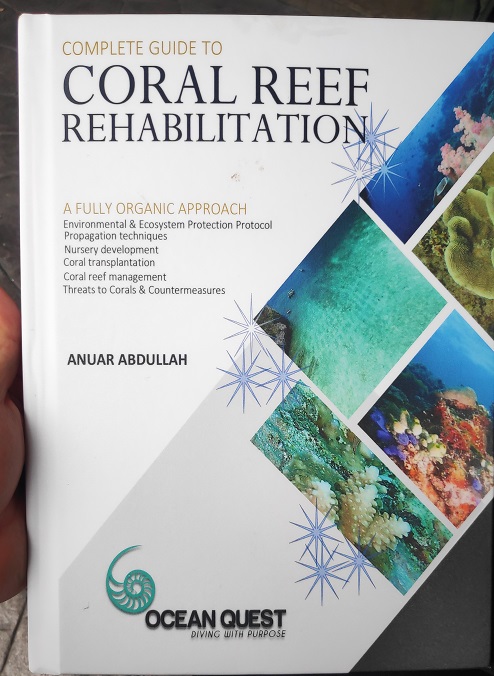
Anuar’s book, which has since sold out. He promised to sell me a copy when the reprint comes
“When you look at forest restoration, people will plant trees or seedlings so that the forest will regrow.
No one in their right mind would throw a car, or a old house into the forest to encourage growth. But that’s exactly what people are doing – creating artificial reefs (a soft word for fake). I don’t want to work with fake things”
As a businessman, Anuar had learnt about the concept of feasibility studies – kinda like knowledge gathering to see if something will work on a bigger scale. So during the late 1990s did his research, primarily based on one key issue. Are artificial reefs…
- Attractive – meaning that they just attract fish from other areas, and don’t result in more fish, or
- Productive – meaning they actually help increase fish numbers
It is worth mentioning that not all researchers agree with this ‘organic’ reef approach. The kayaballs of Similajau have shown some promise in both attracting and producing marine life, with claims that sotong have laid their eggs there lately.
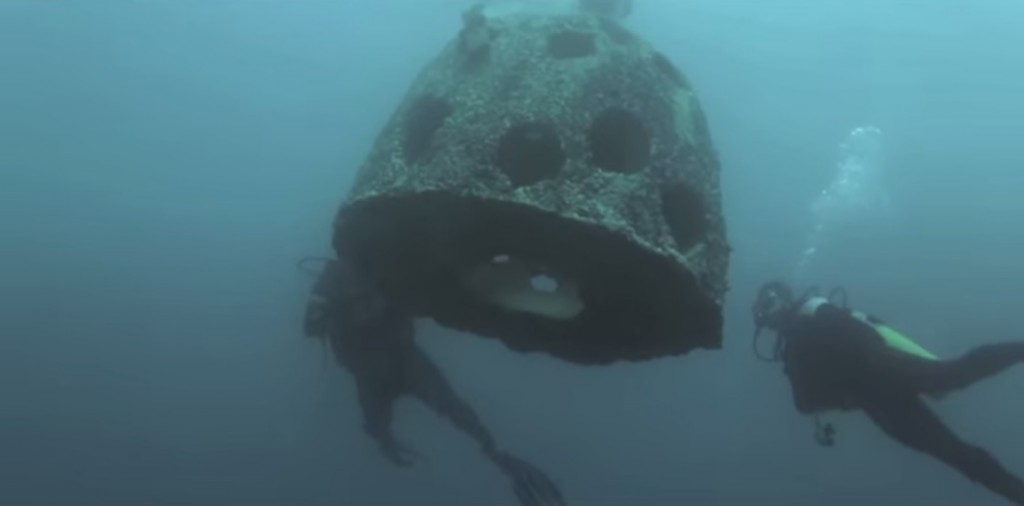
These kayaballs dropped into the ocean by Petronas are an example of artificial reefs. (click to read the article)
“One of the biggest examples is our own governments artificial reefs by the fisheries department – they were spending a million a year on artificial reefs in the 1960s. Do we actually export a lot of fish now? No. We export a few, but import a lot more.” – Anuar
Related to this issue, he wonders why all artificial reefs are built on sandy bottoms, claiming that this is the easy reef to maintain, but that it doesn’t actually solve anything aside from attracting fish to the area from other areas. “If you want to restore coral reef, you should restore coral reef, not something that doesn’t exist.”
Anuar actually honed his craft on the house reef in Perhentian where his dive centre was. He didn’t get to complete his project because he says the marine park didn’t let him.
“They started to say that I don’t have a permit to do anything there. That was in the 3rd year. The 4th year I tried to apply for a permission in Putrajaya and they kicked me around like a ball.
12 years later I came back (next to the marine park jetty) and it was flourishing! That place previously was just water, sand and rock. People used to have to take a boat to go snorkelling. Now they don’t have to.” – Anuar
They also calculated that the reef was generating about RM6,000,000 per year for the local community – through snorkeling shops and dive centres. The only problem was that it had taken a decade for the reef to rehabilitate. If only there was a faster way…
Breaking coral, and patenting a glue to put it back together
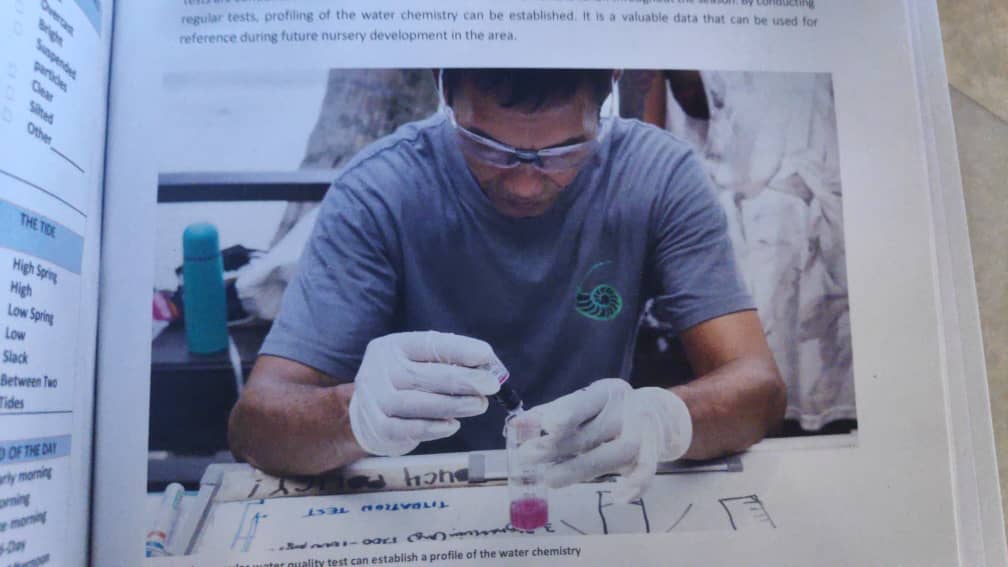
Anuar mixing his coral glue. Image from his book.
In 2018, scientific papers were published that surprisingly pointed out that the fastest way to grow coral was to break it into smaller pieces – something called Microfragmenting. Anuar claims to have known this for decades. The Ocean Quest course actually teaches this method of growing coral farms by picking fragments of broken coral, and reattaching them to reefs that need rehabilitation.
But to reattach these corals to rock, organically of course, Anuar needed an organic glue.
“Every year I moved house because people thought I was making drugs – I was carrying barrels of seawater and chemicals into my apartment – I have running pumps.” – Anuar, about the early days of making his patented Catalyst
In 1999, there was no YouTube or Wikipedia, so Anuar experimented with all types of bonding processes in his projects in Perhentian and Redang. Over the next 7 years, he tried epoxies that aquarium enthusiasts use, and finally he discovered a way to thicken superglue underwater, but it was very expensive. Eventually, he found a similar vetinary superglue (non-toxic and used to treat wounds) , that hardened with calcium in seawater. For calcium, he tried with eggshells, cuttlefish shells, and eventually stumbled upon the most natural, organic, and abundant source of calcium for rehabilitating a damaged reef – dead corals.
The catalyst also makes the glue dissipate and corals regrow on the area within 25 days, whereas other forms of underwater glue are known to kill corals. Another flourish Anuar did was to add a touch of iodine in the mix, because infection from bacteria on human hands or other things is one of the main reasons corals die. Anuar claims about 80% of what Ocean Quest propagates will survive.
And then his empire grew… with donors including CEOs and royalty
Around that time, his marriage was breaking up together with his business (which he shared with his now ex-wife). He sold his businesses in Phuket and Malaysia to fund what eventually became Ocean Quest Global. Oh, that and side jobs he does like painting, photography and lectures, public speaking.
“We don’t take grants because we don’t like being stuck with people who dictate – that’s one of our rules. We can do grants for books and small projects and that’s about it. We have experience with middle men – who just want to make money off us.” – Anuar
It took him another 6 years to finally convince a corporation, Percetakan Nasional, to use the catalyst on a project in Pulau Tenggol. The Managing Director, the late Izham yusof, was a diver. It was a start, and it triggered more corporations. The CEO of Panasonic Japan had requested an experienced dive guide for Perhentian and Anuar’s name came up in 2012. Panasonic ended up contributing USD$40,000 and that covered a lot of the research and patenting. in 2014, they got approached by Kose cosmetics, which to Anuar’s surprise, had a coral rehabilitation project in Okinawa, Japan.
“It was an internal project that they largely kept to themselves – we were the first people they approached. They gave us USD25,000 to rehabilitate Pulau Kapas – their first step outside of Japan. They sent a group of models to take pictures with the corals and stuff.” – Anuar, with a rare chuckle.
By then, Ocean Quest had dive centres in Brunei and Phillipines to rehabilitate coral, with one of the Brunei ministers an active personal donor. In 2013, he also met the SEA director of Sea Shepherd, an infamous, sometimes aggresive watchdog for oceanic conservation.
“I was buying stuff, the SEA director was there, and we just talked crazy stuff for a while – eventually we decided our direction was very similar so we decided to create a campaign together called Sea Shepherd dive – and got into a much bigger audience internationally.”
These days, their donors include prominent Malaysian businessmen, and even the King of Qatar, who Anuar met on a dive trip somewhere he can’t reveal. With 1028 trainers from 30 countries with Ocean Quest now, Anuar is still running it from his apartment in Shah Alam. He doesn’t believe in having a large headcount. Again, he believes in regenerative resources.
“We want to make organic coral rehabilitation into a worldwide phenomenon. But if I want to do artificial reefs – I need to pay officials, buy cement, buy structures, steel, manpower. Money is depleting, cement is depleting, steel mining is depleting.
So we are using the only guaranteed rapidly growing commodity in the world – human population. If I convey my knowledge in a way that’s simple and effective, then that’s the best strategy.” – Anuar.
Interested in joining Ocean Quest? Click on the link below to find out how you can help 🙂
www.oceanquest.global/join-now/
- 7.8KShares
- Facebook7.6K
- Twitter20
- LinkedIn12
- Email16
- WhatsApp124

